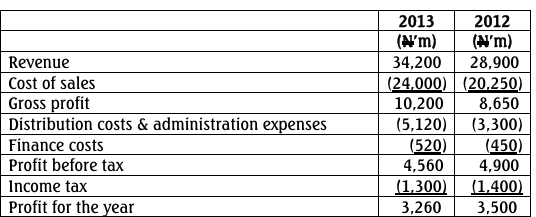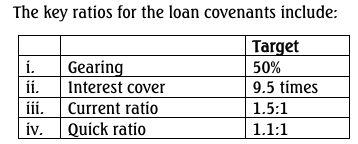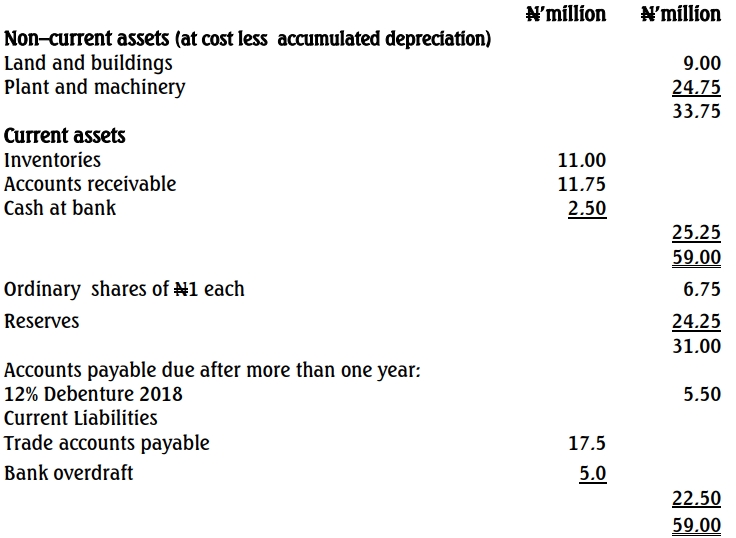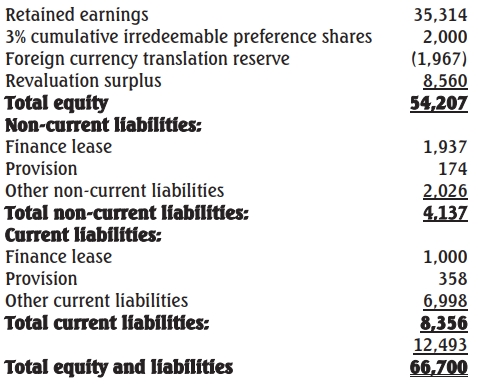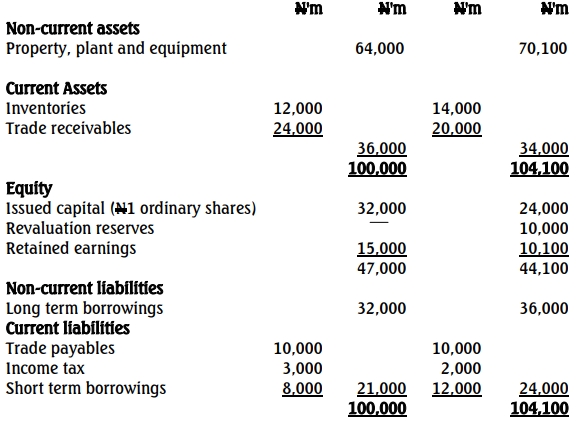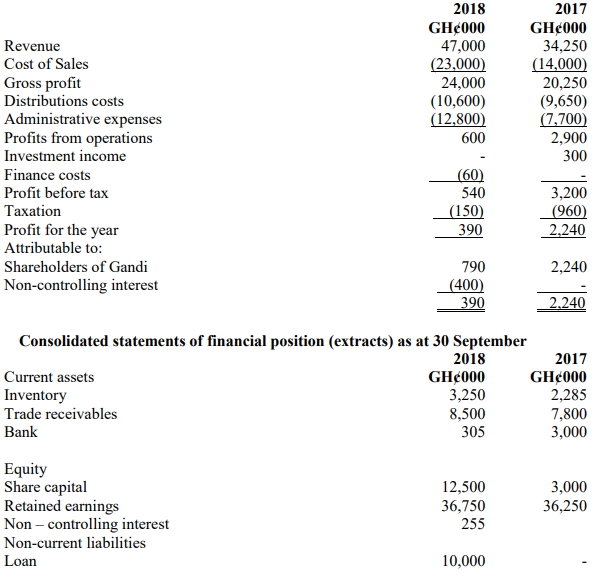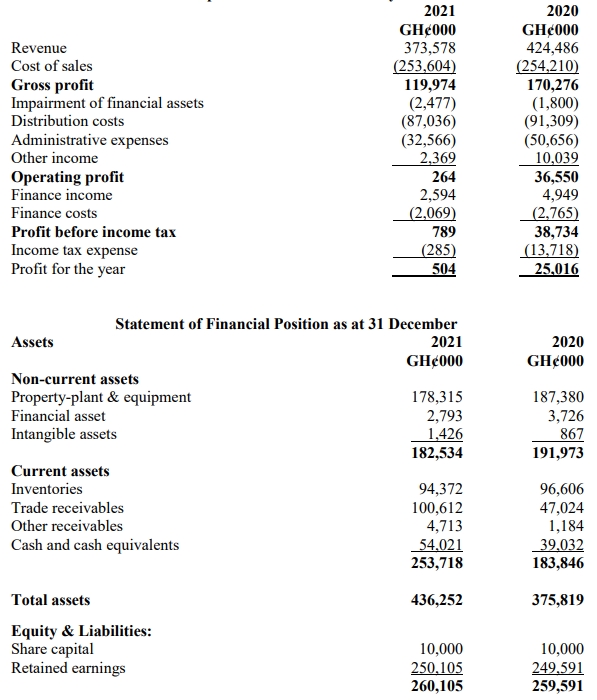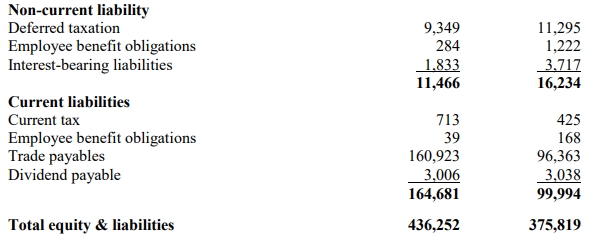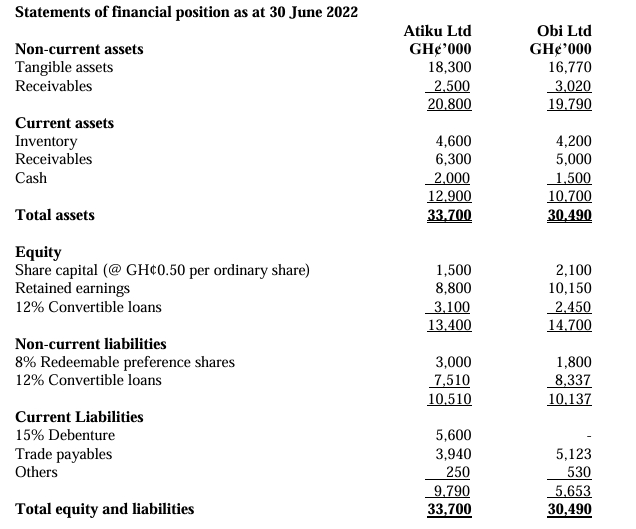Mama-Kitchen PLC owns a number of subsidiaries that operate standard fast-food eateries in all the six geopolitical zones of the country. You are the financial analyst of your Bank (Pam-Pam Bank Nigeria Limited) which owns 10% of the issued share capital of Mama-Kitchen PLC.
You are provided with the following financial and background information on Mama-Kitchen PLC.
Mama-Kitchen PLC
Consolidated statement of profit or loss for the year ended September 30
|
2023 |
2022 |
| Revenue |
188,900 |
145,850 |
| Cost of sales |
(141,700) |
(110,400) |
| Gross profit |
47,200 |
35,450 |
| Admin expenses |
(31,200) |
(22,400) |
| Profit from operations |
16,000 |
13,050 |
| Finance cost |
(2,050) |
(2,100) |
| Profit before taxation |
13,950 |
10,950 |
| Income tax expense |
(3,050) |
(2,300) |
| Profit for the year |
10,900 |
8,650 |
| Earnings per share – basic |
26.8k |
21.3k |
| Earnings per share – diluted |
21.2k |
19.2k |
Mama-Kitchen PLC
Consolidated statement of cash flows for the year ended September 30
|
2023 |
2022 |
| Cash flows from operating activities: |
|
|
| Profit before taxation |
13,950 |
10,950 |
| Finance cost |
2,050 |
2,100 |
| Depreciation and amortisation |
15,300 |
11,050 |
| Loss on disposal of PPE |
150 |
50 |
| (Increase)/decrease in inventories |
(200) |
50 |
| Increase/decrease in receivables |
(1,250) |
(100) |
| Increase in trade payables |
2,250 |
650 |
| Total |
32,250 |
24,750 |
| Interest paid |
(2,050) |
(2,200) |
| Tax paid |
(1,600) |
(1,300) |
| Net cash flows from operating activities |
28,600 |
21,250 |
| Cash flows from investing activities: |
|
|
| Purchase of PPE |
(29,850) |
(28,950) |
| Proceed from sale of PPE |
100 |
150 |
| Net cash used in investing activities |
(29,750) |
(28,800) |
| Cash flows from financing activities: |
|
|
| Proceeds from issues of shares |
1,200 |
100 |
| Borrowings |
3,250 |
10,000 |
| Net cash flow from financing activities |
4,450 |
10,100 |
| Net increase in cash and cash equivalents |
3,300 |
2,550 |
| Cash and cash equivalents at beginning |
12,400 |
9,850 |
| Cash and cash equivalents at year end |
15,700 |
12,400 |
Details of revenue, fast food outlets profits, and new fast food outlets openings for the year ended September 30
|
2023 |
2022 |
| Revenue per fast food outlets: |
|
|
| At September 30 |
1,770 |
1,715 |
| Opened in the current financial year |
1,290 |
– |
| Gross profit per outlet opened |
|
|
| At September 30 |
435 |
415 |
| In the current financial year |
345 |
|
Note:
- 30 new outlets were opened during the year ended September 30, 2023, bringing the total to 115 fast food outlets.
Additional financial information
|
2023 |
2022 |
| Gross profit margin |
25% |
24.3% |
| Debt equity ratio |
35.2% |
44.4% |
| Current ratio |
0.56:1 |
0.48:1 |
| Trade payables payment period |
86 days |
103 days |
| Return on capital employed |
20% |
19.1% |
| Cash return on capital employed |
40.2% |
36.3% |
| Earnings before Interest, tax, depreciation and amortisation (N‟m) |
31,300 |
24,100 |
| Non-current assets turnover |
1.68 times |
1.49 times |
| Share price (at September 30) |
302k |
290k |
Background information
i. Mama-Kitchen PLC has a reputation of depreciating its assets more slowly than others in the industry.
ii. The strategy of the group is to fund new fast food outlets capital expenditure from existing operating cash flows without needing to raise new borrowings.
iii. Revenue growth in the industry is estimated at 4.1% per annum.
iv. It is the company’s policy to increase promotional and advertising spending on new outlets to encourage strong initial sales.
v. The board has accused the management of concentrating on new outlet openings to the detriment of existing outlets.
vi. One of your colleagues, a financial analyst, stated that the company has not been able to pay dividends because of the debit balance on its consolidated retained earnings.
Required:
a. Draft a report addressed to the Managing Director of Pam-Pam Bank Limited analyzing the profitability, cash flows, and investor ratios of Mama-Kitchen PLC. You should also identify and justify matters that you consider will require further investigations.
(13 Marks)
b. Explain the validity or otherwise of your colleague financial analyst’s statement that Mama-Kitchen PLC was unable to pay dividends because of the debit balance on consolidated retained earnings.
(4 Marks)
c. Explain the usefulness and limitations of diluted earnings per share information to investors.
(3 Marks)



